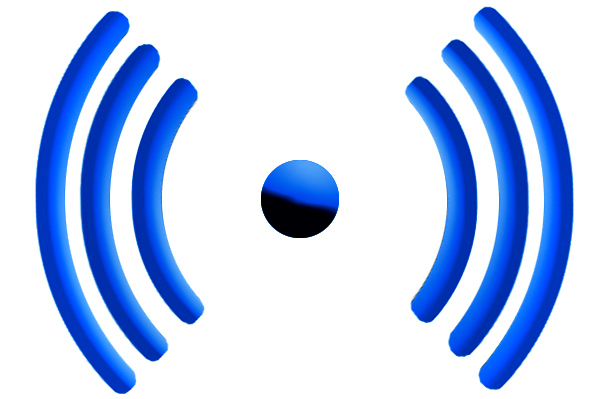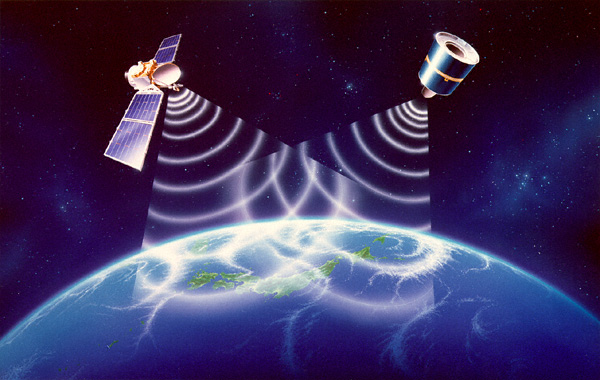waaa it has been six posting already. I can't believe that I am a blogger although it just for my task-proud of myself : p.
ok so for the topic for this week is
>>>WIRELESS<<<
---also known as UNBOUNDED MEDIA/UNGUIDED MEDIA
---media transport electromagnetic wave without physical conductor
---signal are broadcasting through air or water & therefore available to anyone who has a devices capable of receiving them.
TERRESTRIAL MICROWAVE
---require line of sight transmission & reception equipment
---taller the antenna the longer the distance
---towers=on hill
---signals transmit 1 way direction at a time.
Parabolic dish
|
Horn dish
|
.
Based on geometry of parabola
|
Looks like gigantic scoop
|
Works like a funnel - catching a wide range of
waves and directing to a common point call focus
|
Outgoing transmission are broadcast up a stem &
deflected outward in a series of
source parallel beams by the scoop shaped of the horn
|
 |
| parabolic dish |
 |
| horn dish |
SATELLITE
---same principle as microwave
---satellite acting as a super fall antenna & repeater
---single bounce
---capability=any location on earth no matter how
remote
---high quality communication without requiring a huge investment in ground-based infrastructure..
---same speed as earth
---geosynchronous satellite=orbit speed is based on distance from the planet
---minimum 3 satellite to provide full global transmission.
---uplink = transmission from earth to satellite
---downlink = transmission from satellite to earth
RADIO FREQUENCY
---rate of oscillation in the range of about 3kHz to 300 kHz.
---the mode of communication for wireless technology of all kinds such as-cordless phone,radar,ham radio and many more
---These frequencies make up part of the electromagnetic radiation spectrum:
- Ultra-low frequency (ULF) -- 0-3 Hz
- Extremely low frequency (ELF) -- 3 Hz - 3 kHz
- Very low frequency (VLF) -- 3kHz - 30 kHz
- Low frequency (LF) -- 30 kHz - 300 kHz
- Medium frequency (MF) -- 300 kHz - 3 MHz
- High frequency (HF) -- 3MHz - 30 MHz
- Very high frequency (VHF) -- 30 MHz - 300 MHz
- Ultra-high frequency (UHF)-- 300MHz - 3 GHz
- Super high frequency (SHF) -- 3GHz - 30 GHz
- Extremely high frequency (EHF) -- 30GHz - 300 GHz
Radio frequency is also abbreviated as rf or r.f
========> A label -- basically a miniature, disposable electronic circuit and antenna
-- attached
to a product responds to a specific frequency emitted by a transmitter
antenna (usually one pedestal of the entry/exit gate). The response from
the label is then picked up by an adjacent receiver antenna (the other
pedestal). This processes the label response signal and will trigger an
alarm when it matches specific criteria. The distance between the two
gates, or pedestals, can be up to 80 inches wide. Operating frequencies
for RF systems generally range from 2 to 10 MHz (millions of cycles per
second); this has become standard in many countries. Most of the time,
RF systems use a frequency sweep technique in order to deal with different label frequencies.
CELLULAR PHONE
---device that can make & receive telephone calls over a radio link whilst moving around a a wide geographic area
---it woks by connecting to a cellular network provided by a mobile phone operator, allowing access to the public telephone network.
---The common components found on all
phones are:
- A battery, providing the power source for the phone functions.
- An input mechanism to allow the user to interact with the phone. The most common input mechanism is a keypad but touch screen are also found in some high-end smartphones.
- Basic mobile phone services to allow users to make calls and send text messages.
- All GSM phones use a SIM card to allow an account to be swapped among devices. Some CDMA devices also have a similar card called a R-UIM.
- Individual GSM, WCDMA, iDEN and some satellite phone devices are uniquely identified by an International Mobile Equipment Identity (IMEI) number.
WIFI
---stand for "Wireless Fidelity"
---refers to wireless networking technology
---allows computer & other devices to communicate over a wireless signal.
---transmit data using radio wave
 | |
| wi-fi signal logo |
---describe all network component that are based on one of the 802.11standards
---these standards were developed by IEEE (Institute of Electrical and Electronic Engineers)
---have limited range
---the maximum amount of power that a Wi-Fi device can transmit is limited by local regulations
3G & 4G
3G
|
4G
|
3rd
generation
|
4th
generation
|
The
technologies are widespread used
|
The
technologies are still in horizon
|
3G
speeds can reach up to 3 Megabits per second (Mbps), with average speeds
tending to be closer to 1Mbps or lower
|
4G
average speeds are targeted to be in the 100Mbps to 1Gbps range, roughly 10
to 100 times (dependent on location) faster than 3G networks.
|
3G
is a mix of circuit and packet switching network
|
4G
is only a packet switching network
|
BLUETOOTH
---short-distance wireless connections.
---It essentially is a cable-replacement technology.
---allows two Bluetooth enabled devices to communicate with each other from a
distance of 30 feet apart.
---Bluetooth takes small-area networking to the next
level by removing the need for user intervention and keeping transmission power
extremely low to save battery power.
---Bluetooth is essentially a networking standard that
works at two levels:
- It provides agreement at the physical level -- Bluetooth is a radio-frequency standard.
- It provides agreement at the protocol level, where products have to agree on when bits are sent, how many will be sent at a time, and how the parties in a conversation can be sure that the message received is the same as the message sent.
finish already fuhhh...
TQ (^-^)



No comments:
Post a Comment